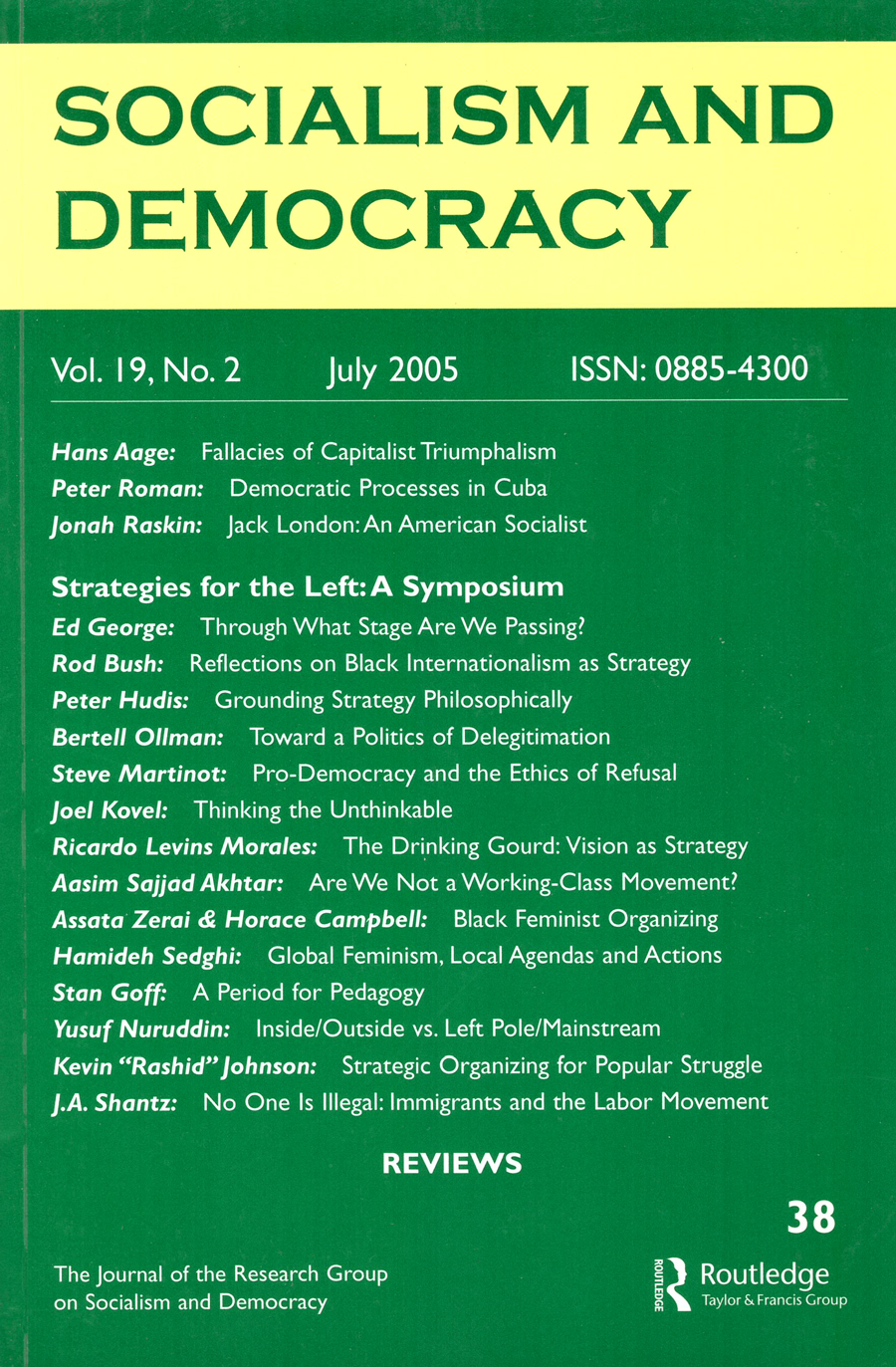“Left Pole/Mainstream,” a rather self-explanatory phrase, is the strategic dictum expressed recently by one of my well-respected academic colleagues and political comrades. Though I’m a Baby Boomer, radicalized in the sixties, and unswerving ever since, it’s a new credo to my ears¾and one which, quite honestly, is hard for me to accept. Mentored by black power activists, the radical strategy which I had always been taught, and in turn have taught to my own activist students, is the “Inside/Outside” strategy, i.e., work inside the system to dismantle it, create liberated zones, speak truth to power, challenge the status quo, learn skills, gain a livelihood, expropriate resources, etc.—and simultaneously work outside the system to build independent alternative revolutionary institutions, so that a network of such institutions could sustain a vibrant oppositional counterculture.
The Inside/Outside strategy was crystallized, for example, in Sam Greenlee’s seditious novel of 1969 (and the 1974 classic film version) The Spook Who Sat by the Door, in which a “brother,” who is aptly surnamed Freeman, joins the CIA, masters all of its espionage and paramilitary science and then trains an inner-city Chicago street gang in the art of guerrilla warfare as the first step in creating a national liberation army. The essence of the Inside/Outside strategy was not necessarily a call to armed struggle, but a call to infiltration rather than integration, subversion rather than submission, resistance rather than resignation, engagement rather than escape. (In the scenario of a highly-regimented organization like the CIA, with one token black man, the mere act of desegregation itself was probably the maximum “challenge to the status quo” tenable; pushing the envelope inside the system, however, is one of the desired goals of the optimum Inside/Outside strategy).
The genesis of the terminology of “Inside/Outside” was as an admonition to those who had chosen to respond to oppression via “flight” rather than “fight”—an admonition to those romantic revolutionaries, utopian separatists, and extreme Afrocentrists, cultural nationalists & religious cultists who thought that we somehow could or should just walk away from white supremacy, that we should distance ourselves through total disengagement, and build a black utopia in the midst of Babylon, rather than dismantle and transform the evil empire. When you are inside the belly of the beast, it’s clear that you’re not completely “outside the system”—and a strategy that presumes such is unrealistic and unworkable. Inside/Outside is the dialectic of the black liberation struggle.
To my mind though I am sure that my comrade will vehemently disagree the strategy of Left Pole/Mainstream entails a certain investment in the corporate state (and the corporate academy). It presumes that an “outside” cannot be constructed. And it brings up the old bugaboo of “reform versus revolution.” (Just what is a “left pole of the mainstream” anyway?—the liberal end of the establishment spectrum? To be sure, my comrade is a dyed-in-the-wool Marxist—but what in the world is a mainstream Marxist?) My satire belittles the seriousness of this issue however. Certainly the complexity of the issue is reflected throughout the debates within the left, especially during the 2000 presidential election as leftists passionately argued the merits of voting for Gore or for Nader. But electoral politics is not the key issue here. The philosophy of working completely “inside the system” in order to change it—which is implicit in this Left Pole/Mainstream strategy—is what I find disturbing.
A total reliance on working within the mainstream—even at the left end of the mainstream—is as flawed, in my estimation, as the notion of working completely “outside the system.” I hear echoing in my head the famous quotation of the black feminist Audre Lorde: “The master’s tools can never dismantle the master’s house.” The black nationalist movement has been roundly criticized on many levels, one of which was its tendency to disavow marches, protests and demonstrations (as bankrupt non-violent civil rights movement tactics) and to invest its energies in “nation-building” (actually institution-building). Yet there is something that the left can learn from the black nationalist institution-building emphasis. By investing all our hopes, dreams and energies in a left pole of the mainstream, we will neglect to build the institutions and networks of institutions—the alternative schools, think/act tanks, cafés, bookstores, media outlets, etc. (we have many free-standing but fragile institutions, so viable “networks” is the operative word here) that can sustain an oppositional movement when we fail to elect our mainstream left pole candidates or when hundreds of thousands of participants in mainstream peaceful protest fail to divert an administration hell-bent on war.
The Inside/Outside strategy of creating independent cultural centers was successful in sustaining the cultural workers—poets, essayists, novelists, musicians, dancers, painters, photographers—of the Black Arts Movement, who engineered a “social revolution” through their concerted efforts. Just as the Black Arts Movement was the aesthetic arm of the black revolution, the Black Studies movement was its intellectual arm. That the mainstreaming and professionalization of Black Studies gave way to the cooptation of this movement is evident in the excessive theorizing that typifies much of the field. The analogy holds for the left pole of the academy as well, and begs that both leftists and black liberationists create alternative praxis academies (while remaining “tenured radicals” inside the mainstream). The cultural war, the battle for cultural hegemony with the right wing which we are engaged in, is a protracted struggle for the minds and the hearts of the masses. We need to create and sustain a network of independent institutions where a left oppositional culture can flourish. Inside/Outside must not simply remain the strategy of the black liberation movement; it must become the strategy of the entire left.

